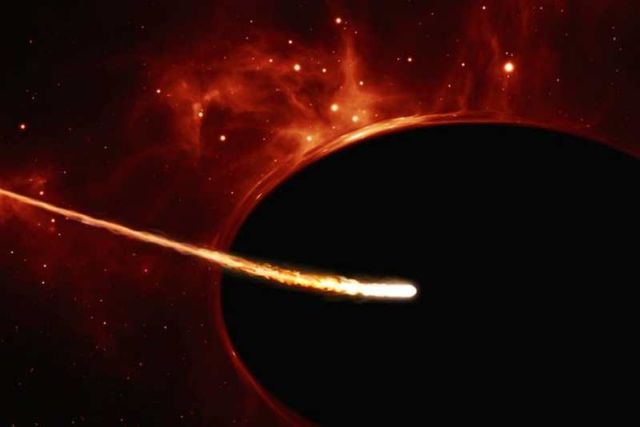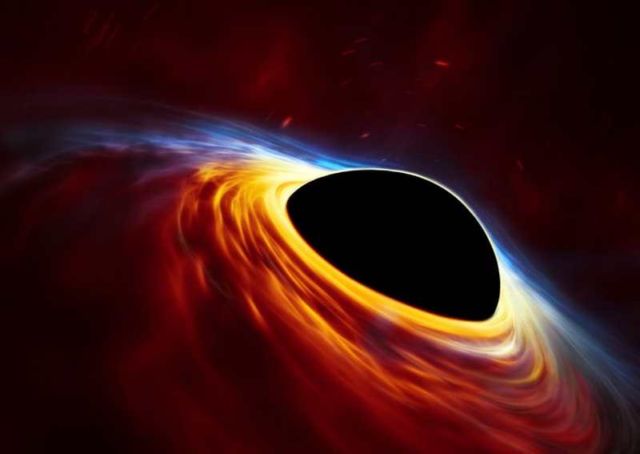Spinning gigantic black hole swallowing star explains superluminous event.
This artist’s impression depicts a Sun-like star close to a rapidly spinning supermassive black hole, with a mass of about 100 million times the mass of the Sun, in the center of a distant galaxy. Its large mass bends the light from stars and gas behind it. Despite being way more massive than the star, the supermassive black hole has an event horizon which is only 200 times larger than the size of the star. Its fast rotation has changed its shape into an oblate sphere.
The gravitational pull of the supermassive black hole rips the the star apart in a tidal disruption event. In the process, the star was “spaghettified” and shocks in the colliding debris as well as heat generated in accretion led to a burst of light. Credit: ESO, ESA/Hubble, M. Kornmesser
Spinning supermassive black hole rips star apart
This animation shows how the ASASSN-15lh most likely happened. A Sun-like star gets into the area of influence of a rapidly spinning supermassive black hole in the centre of a distant galaxy. While its orbit gets constantly closer to the black hole the star gets “spaghettified,” creating an accretion disc around the supermassive black hole. When it finally gets ripped apart close to the event horizon it creates a bright flash, that could resemble a superluminous supernova.
This artist’s impression depicts a rapidly spinning supermassive black hole surrounded by an accretion disc. This thin disc of rotating material consists of the leftovers of a Sun-like star which was ripped apart by the tidal forces of the black hole. Shocks in the colliding debris as well as heat generated in accretion led to a burst of light, resembling a supernova explosion. Credit: ESO, ESA/Hubble, M. Kornmesser
source ESO







Leave A Comment